Ferm FZT-250 Handleiding
Ferm
Zaagmachine
FZT-250
Bekijk gratis de handleiding van Ferm FZT-250 (18 pagina’s), behorend tot de categorie Zaagmachine. Deze gids werd als nuttig beoordeeld door 88 mensen en kreeg gemiddeld 5.0 sterren uit 44.5 reviews. Heb je een vraag over Ferm FZT-250 of wil je andere gebruikers van dit product iets vragen? Stel een vraag
Pagina 1/18

Ferm b.v.
●
P.O. Box 134
●
8280 AC Genemuiden-NL
●
Internet: www.ferm.nl 0006/07
Ferm FZT-250
Saw-bench
Tischkreissäge
Zaagbank
Scie d’établi
Sågbord
Sahapenkki
Sagbenk
Savbænk
Art. nr: 420085
USERS MANUAL
GEBRAUCHSANWEISUNG
GEBRUIKSAANWIJZING
MODE D’EMPLOI
BRUKSANVISNING
KÄYTTÖOHJE
BRUKSANVISNING
BRUGER VEJLEDNING

Ferm 35
AVAILABLE SPARE PARTS FOR FZT-250
EXPLODED VIEW 1
REF.NR. DESCRIPTION FERM NR.
1/2/3 SAWBLADE COVER COMPLETE 407460
13-18 ANGLE GAUGE COMPLETE 407461
19/20 TABLE INSERT 407462
22-35 SAWGUIDE COMPLETE 407463
45 GEAR SHAFT 407464
46 KEY 407465
47 GEAR 407466
54 ROTOR 407467
56 STATOR 407468
59/60/61 CARBON BRUSH + HOLDER 407469
81 HEX. NUT M16 x 1.5 407472
82 OUTSIDE FLANGE 407470
83 HARD METAL SAW BLADE 250 x 30 x16, T36 327252
83 HARD METAL SAW BLADE 250 x 30 x 16, T30 310360
84 INSIDE FLANGE 407471
103 CRANK 407473
111 MAGNETIC SWITCH 407474
115/116 FIXED BRACKET + RING 407475
Product: Ferm saw-bench
Type FZT-250, Art. nr. 420085
Ferm, Genemuiden, the Netherlands
Sound pressure level (Lpa ) 85 dB(A)
Acoustic capacity level (L wa ) 99 dB(A)
Measurements of bench 685 x 430 mm
Suction mouth Ø 30 (22) mm
SERIAL NUMBER
The serial number on the machine is composed as fol-
lows:
Serial nr.
READ THESE INSTRUCTIONS FOR USE
PROPERLY BEFORE YOU USE THE SAW-
BENCH!
1. SPECIAL SAFETY
INSTRUCTIONS
1. When using the saw blades with hard metal teeth
(widia) it is advisable to use blades with a negative
or slightly positive cutting angle. Do not use any
saw blades with deeply cut teeth. They can grip the
protective cap.
2. Attention: First carefully assemble all the parts be-
fore starting work. Follow the procedure as indica-
ted.
3. If you are not familiar with using such a machine,
you would be better to be informed first by a pro-
fessional, an instructor or by a technician.
4. Always clamp or press the workpiece firmly
against the saw guide, before you carry out the
process. The use of all possible clamping set-ups is
preferable to using your hands.
5. Important: If you are holding the workpiece by
hand for the process to be carried out, keep a mini-
mum distance of 100 mm from the saw blade.
6. Always press the workpiece against the bench.
7. Keep the saw blade sharp and check regularly
whether it rotates freely without abnormal vibra-
tions. Replace the saw blade if necessary.
8. Allow the machine to rotate freely until it reaches
the maximum number of revolutions, before you
start the process.
9. Maintain the air inlets at the back and the bottom of
the bench saw machine and electric engine for a
longer machine life. Dust piles must be removed.
10. Always lock the different degree set-ups before
you start processing.
11. Only buy suitable saw blades with a number of re-
volutions of at least 6000 revolutions per minute.
12. Only use the correct saw blade. Too small or too
big saw blades are extremely dangerous.
13. Regularly inspect the saw blade for any faults. Re-
place the saw blade if necessary.
14. Grease the new saw blade and clean the flanges be-
fore you assemble the new blade. Then assemble
the blade in the correct direction and pull the flan-
ges firmly using the central bolt (left thread!)
15. Only use original flanges. All other types are not
suitable.
16. Never work without the protective cap of the saw
blade.
17. The moving part of the protective cap must also re-
main assembled.
18. Never grease the saw blade while it is rotating.
19. Always keep your hands removed from the track
of the saw blades.
20. Never pick up the workpiece by grasping with your
hands along or behind the saw blade.
21. Ensure that the workpiece never touches the saw
blade, before the machine has been switched on.
22. Never process metal or stone sorts with this ma-
chine.
23. Use support aids in order to support long work-
pieces.
24. Never use the machine in a dangerous environ-
ment, where inflammable gases or fluids are pre-
sent.
25. Never leave the machine unattended without first
disconnecting it from the mains voltage.
26. If you hear abnormal noises, try to trace them or
take the machine to a recognized fitter, or repair
company.
27. If a part is broken or damaged, replace it or repair it
immediately.
28. Never stand in the track of the saw blade but stand
to the left or the right of the saw bench.
29. Your hands must likewise be placed next to the
track of the saw blade.
30. Never use a wooden pole instead of your hands to
push the wood through the saw.
31. Always place the wood at the front of the saw ben-
ch and then push it further back.
ORDER NUMBER / CONSTRUCTION YEAR
GB English
2 Ferm
VOLT WATT RPM mm mm mm kg
230V~50Hz 1.5 kW 4500 55 80 Ø 254 x 1,6 x 16 22
40 Teeth
45°
MM
1'
90°
MM
kg.
IP
20

34 Ferm
EXPLODED VIEW 32. For mitring only the adjustable guide must be used
and the fence must be removed.
33. Never use the fence as a linear measure for cutting
off beams.
34. If the saw blade is locked: first switch off the machi-
ne before you attend to the fault.
35. Avoid workpieces hitting back in your direction by
taking the following measures:
- always use sharp saw blades;
- do not saw too small workpieces;
- never release the workpiece before it has been
completely pushed through the saw;
- always adjust the guide parallel to the saw blade;
- never remove the saw protection;
36. Before you continue sawing, ensure that you are
standing firmly and that your hands are in the requi-
red position.
37. Never use thinners to clean the machine. Only use
a damp cloth for cleaning.
2. DESCRIPTION
(FIG. 1)
1. Protective cap
2. Fence
3. Bench inlay
4. Mitre handle
5. Height handle
6. Measurement set-up for fence
7. On/off switch
8. Bench protractor for mitring
9. Workbench
3. ELECTRICAL CONNECTION
1. As a supply for this machine always use an unloaded
line and/or an extension cable with conductors of
at least 1,5 mm2and protected with a 16 A fuse. Be
sure that this extension cable is not longer than 20
metres.
2. Only connect your machine and/or extension ca-
ble to an earthed electricity mains.
3. This machine can be switched to the single-phase
network (220-240 V/50 Hz). If you are in doubt
about the earth of the electricity provisions, con-
sult an electrician first.
4. ASSEMBLY
1. ASSEMBLY OF THE BENCH SAW ON
THE WORKBENCH
Attention! Only use the machine after it has been as-
sembled completely and it has been screwed onto the
workbench or the frame.
Fig. 2 shows the distance of the holes to be drilled in
the workbench on which to fasten the machine. Drill
holes of 8 mm.
1. Fig. 3 shows the part to be sawn out (310 x 310), so
that the sawdust can fall through it and piling up is
prevented!
Only if you do not use an extraction system!
2. Fasten the machine with bolts.
If the frame is used, it must be fixed on the floor
with four screws and the machine must be fixed on
the frame with four screws. Check the screws be-
fore switching the machine on.
2. ASSEMBLY AND SETTING-UP OF THE
FENCE
1. Raise the handle upwards so that the claw of the
guide is open enough in order to place the fence on
the bench top.
2. Now lay the fence on the bench and install the back
part (with the claw) and then place the front part
over the rail. With the handle at the front of the
fence you can adjust the clamping stress of the fen-
ce.
Lock the fence by pushing the handle downwards.
If the handle cannot be pushed through far enough,
the clamping stress is too high and you must turn
the handle a few turns looser. If the handle can be
pushed through far enough but the fence is not fas-
tened or loosens by vibration, the clamping stress
is too low and you must turn the handle a few turns
tighter.
3. ASSEMBLY OF THE RIVING KNIFE
AND OF THE PROTECTIVE CAP
1. Turn the saw blade completely upwards.
2. Remove the bench inlay.
3. Assemble the riving knife on the set-up for this pur-
pose and use hereby the Allen screws and the filling
rings. Ensure that the riving knife falls properly into
the opening (= groove).
4. Now assembly the protective cap onto the riving
knife and use hereby the profiled nut and self-loc-
king nut.
5. Attention! Now lay a lath against the saw blade and
the riving knife and check whether it falls properly
into the extension of the saw blade. If this is not the
case: Loosen the fastening bolts and place or remo-
ve the filling rings.
4. ASSEMBLY OF THE SAW BLADE
First remove the plug from the mains before the saw
blade is assembled or replaced.
1. Remove the inlay from the bench. Use a screwdri-
ver for this purpose.
2. Turn the saw axle completely upwards. Remove
the nut and the outside flange from the saw axle.
3. Now slide the saw blade over the saw axle and now
put the outside flange and the nut back. Tighten the
nut by hand.
Ferm 3
Product specificaties
| Merk: | Ferm |
| Categorie: | Zaagmachine |
| Model: | FZT-250 |
Heb je hulp nodig?
Als je hulp nodig hebt met Ferm FZT-250 stel dan hieronder een vraag en andere gebruikers zullen je antwoorden
Handleiding Zaagmachine Ferm

10 Juni 2023

25 Mei 2023

10 Mei 2023

7 Mei 2023

27 April 2023

26 April 2023

14 April 2023

14 April 2023

10 April 2023

30 Maart 2023
Handleiding Zaagmachine
- Batavia
- Rona
- Milwaukee
- Trotec
- Vonroc
- Gardena
- Blucave
- Stihl
- Ribimex
- Challenge Xtreme
- Smart365
- Black Decker
- Troy-Bilt
- Budget
- Meister Craft
Nieuwste handleidingen voor Zaagmachine
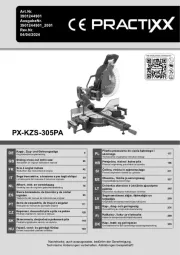
30 Juli 2025
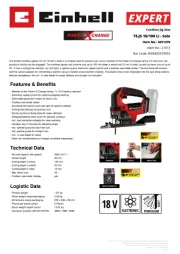
29 Juli 2025
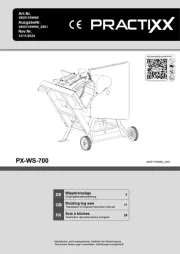
29 Juli 2025
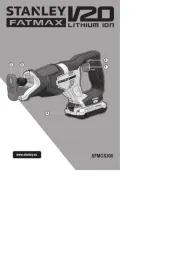
29 Juli 2025
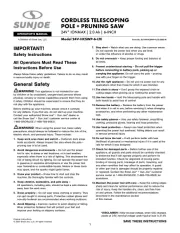
29 Juli 2025
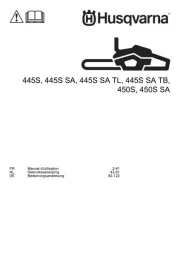
28 Juli 2025
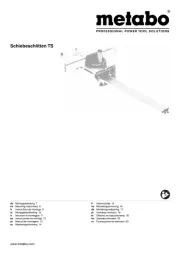
23 Juli 2025
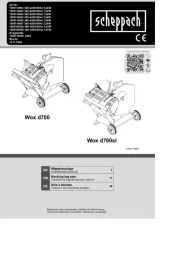
21 Juli 2025
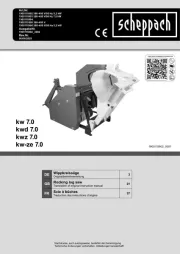
21 Juli 2025
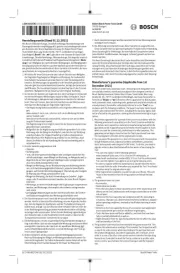
20 Juli 2025